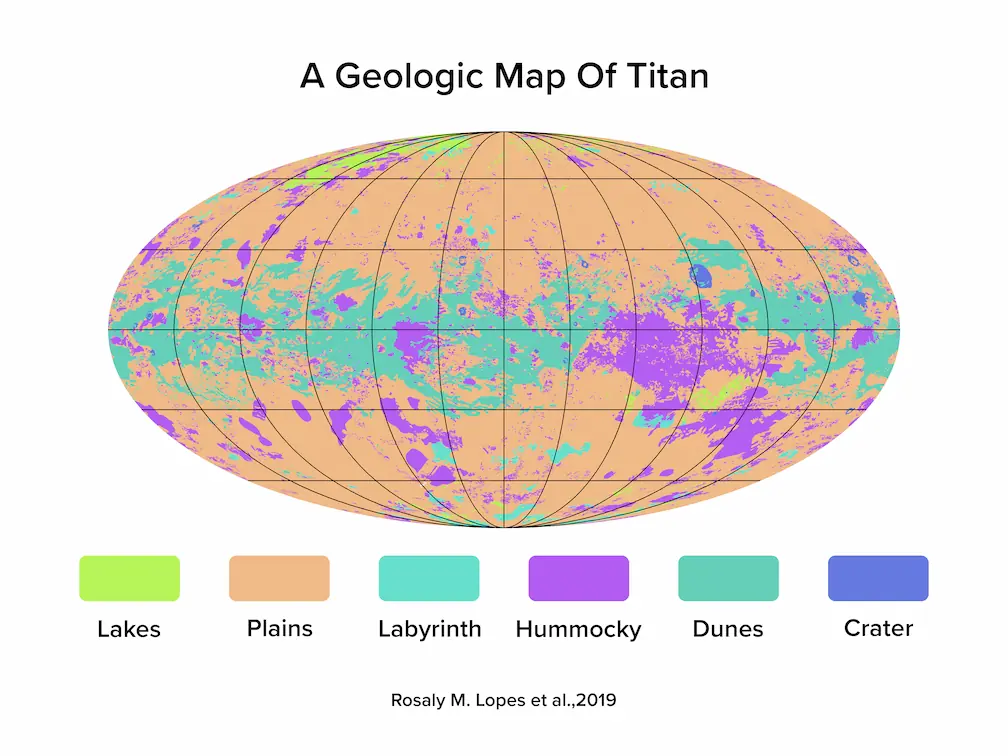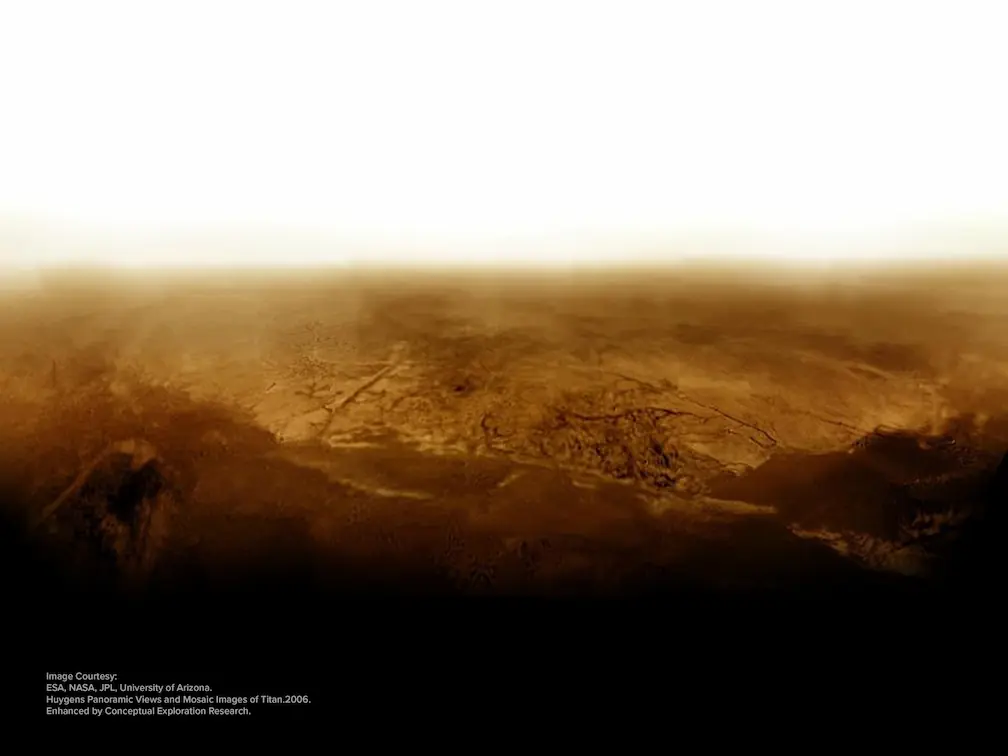The Astraeus Mission to Titan
A new mission by Conex Research called ‘Astraeus’ is being designed to explore Saturn's moon, Titan.
Background
A new mission by Conex Research called ‘Astraeus’ is being designed to explore Saturn's
moon, Titan. Titan is the only moon with a dense atmosphere in the Solar System for which
the stable existence of liquid on the surface has been proven, and so it provides both a
large number of science questions, and an engineering challenge.
Another celestial body with these parameters is our home, Planet Earth. But it could be asked,
‘does anything else unite the Earth and the cold moon of the gas giant Saturn? And is it as cold
as it seems at first glance?’
History
First, let's take a moment to revisit the path of exploration of Titan. We can put forward
theories about Titan's geology, internal structure and physical chemical features thanks to
data from previous missions. Throughout history, there have been only three missions that
allowed scientists to seriously assess the potential of the ice giant: Pioneer 11, Voyager
1, and Cassini-Huygens.
In 1979, Pioneer 11 provided us with the first image of the moon, giving us a glimpse of Titan's
dense atmosphere and confirming that Titan has extremely low temperatures. Later in 1980 and
1981, the Voyager 1 and 2 spacecraft saw a blue haze that appeared to be a separate layer of
Titan's upper atmosphere. Furthermore, Voyager 1 showed that Titan had traces of acetylene, ethane
and propane, as well as other organic molecules, and that its atmosphere consisted mostly of
nitrogen. Using its instruments, it transmitted surface temperature data and also measured the
radius of the moon showing that Titan is the second largest moon in the Solar System.
The Cassini-Huygens mission, which orbited Saturn in 2004, provided us with the most complete
dataset we have to date. Over 13 years, the Cassini spacecraft made 127 close passes over Titan,
using a suite of instruments, including radar and infrared, to penetrate through the haze of
Titan's atmosphere and acquire numerous data and images of its surface. The Huygens probe was
the first spacecraft to descend to the surface of a moon in the outer Solar System on the 14th
of January, 2005, providing scientists with spectacular images of the distant world. In the future,
NASA plans to send another mission to Titan called Dragonfly. This mission would send a rotary
wing aircraft to Titan in 2027 to fly to a large number of promising sites to collect scientific
data, including prebiotic chemical processes.
Titan Environment
Upon inspection of our data, it turns out that this world is not as alien as it might have
seemed at first glance. Titan has clouds, rains and reservoirs filled with liquid
hydrocarbons, and a subsurface ocean of salt water almost certainly exists. Numerous images
have allowed scientists to identify individual structures that make up the topography of
Titan: mountain systems, dunes, impact structures (shapes resembling wells from a meteorite
impact), lakes and seas. There are theories about the presence of cryovolcanic structures,
some images resemble folded systems, like those we can observe on Earth, dotted with
numerous faults, which could be evidence of a solid crust and geological activity on Titan.
This is also supported by the hypothesis of a hydrocarbon cycle, i.e. the evaporation of
Titan into the atmosphere followed by precipitation, but there are models in which the
replenishment of methane in the atmosphere must come from some other source, such as from
the interior.
In addition to existing hypotheses, we put forward the assumption that an impressive part of
Titan's geomorphology is composed of glaciers. For a glacier to form, it is necessary to have
an underlying surface, constant negative temperature and atmospheric precipitation (amount of
900 mm/year). The development of instruments capable of obtaining more data about surface of
Titan would provide us with perhaps the most comprehensive data on geological activity on its
surface, and thus on evolution in general. Glaciers form complex and specific landforms over
many years, and such structures can be mistaken for mountain formations or even river systems
due to insufficient image resolution. However, when studied in more detail, glacial valleys cannot
be confused with anything else.



But let's talk about where exactly we want to land on Titan and why. Before discussing the most attractive landing sites for the Astraeus mission, we suggest recalling the landing site of the previous Cassini-Huygens mission and what it was notable for. Huygens made a graceful parachute landing in Titan's equatorial region, 192.32 degrees west longitude and 10.25 degrees south latitude, about 4 miles (7 kilometers) from its target point, to be exact. The probe transmitted invaluable data to Cassini, which it then relayed to Earth. The images of the Huygens landing site resembled a parched and frozen river valley, composed of various sizes of rounded rock/ice fragments. For the Dragonfly mission, planned for arrival at Titan in the 2030s, the equatorial "Shangri-La" dune fields was chosen as the starting point. The spacecraft will then travel to the Selk impact structure, which is just north of where the Huygens probe landed, to look for traces of past water and organic molecules along the way, collecting samples.
Landing Sites
The Conex team has chosen four strategic locations for the Astraeus mission: three locations
suitable for landing and detailed in-situ exploration, these being the lakes near Titan's
north pole and their surroundings. One location which will hopefully be explored during the
flyby from about 40 km altitude is a structure called Ganesa Macula, to which we will return
a little later.
Why the lakes? To date, scientists disagree on the origin of Titan's hydrocarbon lakes in its
northern polar region. There are theories of impact, volcanic and karst origin. But to refute
or prove this or that theory we need more data and missions. One thing becomes clear - Titan's
crust probably consists not only of solid ice, as many people used to think, but of a more diverse
structure and chemical composition. Also, in theory, the formation of lakes of this type may
be preceded by hydrolaccoliths, similar to those developed in the northern latitudes on Earth.
They are formed in the permafrost zone and consist of frozen ground layered with ice. This process
is also associated with surface drying of thermokarst lakes.
Below are the main characteristics of each potential location:
Lake Kraken Mare
This lake is the largest lake known to date on Titan (500,000 km2), and therefore is the most win-win location and is located in a depression and reminiscent of terrestrial crater lakes. It is thought to be filled with 70% methane, 16% nitrogen and 14% ethane.
Lake Ligeia Mare
It is the second largest body of liquid on the surface of Titan, after Kraken Mare. Measuring roughly 420 km (260 mi) by 350 km (217 mi) across, it has a surface area of about 126,000 km2, and a shoreline over 2000 km (1240 mi) in length. It is mostly composed of liquid methane, with unknown but lesser components of dissolved nitrogen and ethane. The lake may be hydrologically connected to the larger Kraken Mare and may be studied in association with the Kraken Mare. The average depth is on the order of 50 m, while the maximum depth is probably > 200 m. The total volume is likely to be > 7000 km3.
Lake Mackay Lacus
Located east of the two previous lakes, and is not particularly large, Lake Mackay Lacus’s location may allow us in one mission to explore several distant points, namely to fly over the structure Ganesa Macula, according to some scientists a structure representing a system of cryovolcanoes. If so, we will be able to assess the physical and chemical composition of Titan's interior, as well as get closer to answering the question of the existence of biological molecules capable of evolving into a living organism.
Ganesa Macula
Ganesa Macula has a diameter of 180 km, and the coordinates of the center are 49°42′N.
87°18′ W. 49.7°N. 87.3° W. In the center is a 20-kilometer bright spot, visible in Cassini’s
Radar measurements, of unknown origin. Within Ganesa, the East, West and Central calderas
are distinguished. The West Caldera and the irregularly shaped crater stream can be seen
about 1070 km from the western edge of Ganesa. The caldera is about 18 km in diameter, the
flow is at least 84 km long, and the minimum area is 1020 km2 . The largest field
complex of the flow (Winia Fluctus, at least 23,700 km2) is located about 1,340
km east of the eastern edge of Ganesa. The flow extends from 50° west longitude, 52° north
latitude to 44° west longitude, 47° north latitude.
Ganesa Macula is a special structure on Titan. According to the SAR Ta data of the Cassini mission,
this structure has the greatest potential to be a region of cryovolcanoes. Radar data and modeling
suggest that Ganesa Macula has a similar morphology to shield volcanoes common on Earth, Venus,
Mars and the Moon. It is worth noting that the structures described in the scientific papers
on Titan strongly resemble glacial valleys, which, however, does not exclude the existence of
cryovolcanic structures that have undergone glacial erosion over time.



Vehicles & Instruments
The Conex team is developing unique instruments to obtain new data that shed light on the
origin of the lakes, the composition of Titan's crust, the atmospheric features of the moon,
and to clarify the presence of cryovolcanoes and the possible existence of biological
molecules that can organize complex life chains. Our team is now working on a Main Orbital
Spacecraft (MOS) which comprises the major bus element that will hold all other spacecraft.
The MOS will host a Mayfly-Manta system, the Manta being a marine vehicle, which is a
deployable probe from the Mayfly airborne vehicle. Mayfly will perform an aerial observation
of potential landing sites on Titan's lakes, where landing on a suitable surface requires
the system to lower the Manta into the lake. The system will be equipped with a descent mass
spectrometer as well as a device for fluid sampling and analysis in the study of circumpolar
lakes (‘vacuum cleaner’ sample collector). In addition, the probe will be equipped with an
accelerometer, thermometer, sonar, dielectric sensor, pressure sensor and sound speed
sensor. Moreover, we plan to use a CubeSats 2U, called the Mites, weighing not more than 2
kg, that will be deployed from 1400 km in altitude into a low decay-rate orbit and equipped
with ion-neutral mass spectrometer to measure heavy anions. These Cubesats will also carry
an accelerometer, thermometer and barometer. We also plan to survey Titan's surface during
the flyby with synthetic aperture radar (SAR), and study the physical and chemical
properties of Titan's crust with gamma-ray and neutron spectrometer.
The Conex Research plans to present new mission to the Titan at IAC 2022 in Paris. Join us as
we begin our journey to one of the Solar System's most mysterious moons.



